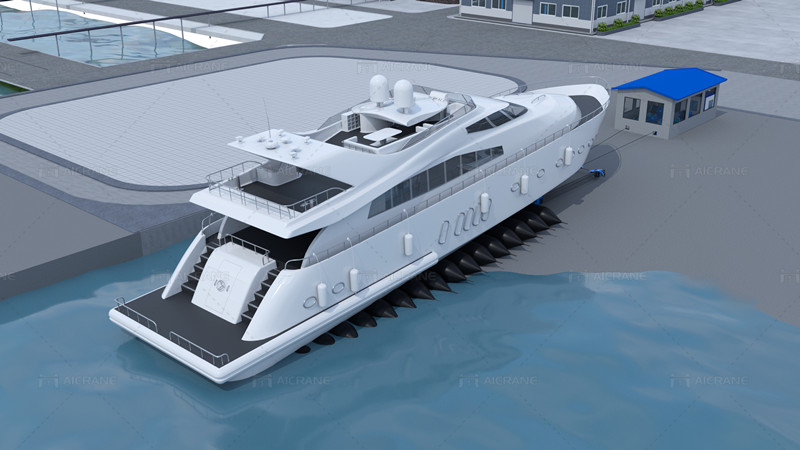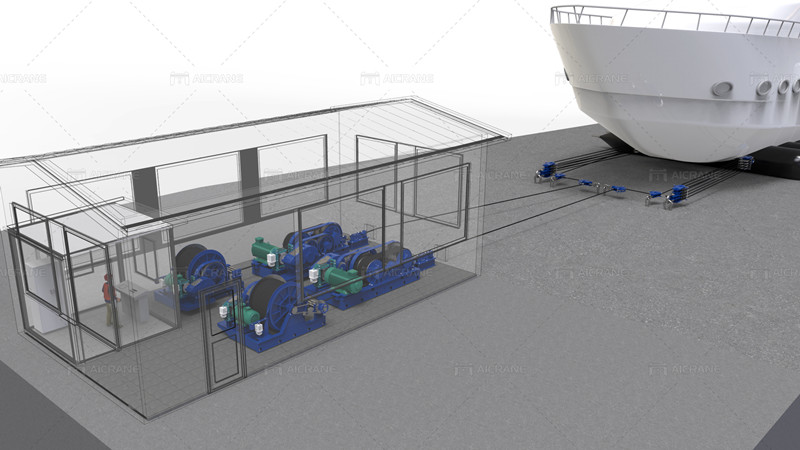A slipway winch is a crucial component in marine facilities, providing the means to launch and retrieve boats and ships. The reliable performance of a 240V slipway winch is essential for the efficiency and safety of maritime operations. Regular maintenance is paramount to ensure the longevity and optimal functioning of the winch. In this comprehensive guide, we will explore key aspects of the maintenance process for a 240V slipway winch.

Scheduled Inspection and Lubrication
Regular inspections form the foundation of effective maintenance for a 240V slipway winch. A comprehensive examination of the winch’s components should be scheduled at regular intervals, considering factors such as usage frequency and environmental conditions.
Inspection Checklist
Wire Rope and Sheaves: Inspect the wire rope for signs of wear, corrosion, or fraying. Check sheaves for proper alignment and ensure they rotate freely.
Brakes and Clutches: Examine the condition of brakes and clutches. Verify that they engage and disengage smoothly. Adjust tension if necessary.
Gearbox and Motor: Inspect the gearbox and motor for leaks, unusual noises, or vibrations. Ensure that lubrication levels are appropriate and replenish as needed.
Electrical Components: Check all electrical connections, terminals, and wiring for signs of wear, corrosion, or damage. Tighten loose connections and replace damaged components.
Control System: Test the control system, including switches, buttons, and emergency stop functions. Ensure that the control panel is clean and free of debris.
Lubrication
Proper lubrication is essential for reducing friction, preventing wear, and ensuring smooth operation. Follow the recommendations of manufacturer for lubrication intervals and use high-quality lubricants suitable for the winch’s specific components.
Wire Rope: Apply a thin layer of lubricant to the wire rope, paying attention to areas with high wear. Clean the rope before lubricating to prevent the accumulation of dirt.
Sheaves: Lubricate sheaves to facilitate smooth rotation. Remove any old lubricant or debris before applying new lubrication.
Bearings and Gears: Ensure that bearings and gears within the gearbox are adequately lubricated. Use the recommended lubricant and follow the specified intervals.
Tension and Alignment Checks
Maintaining proper tension in the wire rope and ensuring correct alignment of components are crucial for the safe and efficient operation of a slipway winch. Incorrect tension can lead to slippage, reduced performance, and accelerated wear.
Tension Checks
Regularly measure and adjust the tension of the wire rope according to the manufacturer’s specifications. Proper tension ensures reliable lifting and lowering operations without overloading the winch.
Alignment
Check the alignment of sheaves, gears, and other moving parts. Misalignment can cause uneven wear and lead to premature failure. Adjust or realign components as necessary to ensure optimal performance.
Cleaning and Corrosion Prevention
Marine environments expose slipway winches to saltwater and corrosive elements, making regular cleaning and corrosion prevention crucial aspects of maintenance.
Cleaning
Wire Rope: Clean the wire rope regularly to remove salt, debris, and other contaminants. Use a wire brush or a mild detergent solution for cleaning.
Exterior Surfaces: Wipe down the winch’s exterior surfaces, including the gearbox and motor, to remove salt and dirt. Pay attention to ventilation openings to prevent blockages.
Corrosion Prevention
Protective Coatings: Apply corrosion-resistant coatings to susceptible components, such as the gearbox, motor, and structural elements. Regularly inspect coatings for wear and reapply as needed.
Galvanic Corrosion Protection: If the slipway winch is in contact with dissimilar metals, consider using galvanic corrosion protection measures such as sacrificial anodes.
Electrical System Checks
The electrical components of a 240V slipway winch play a critical role in its operation. Regular checks and preventive measures are essential to maintain the integrity of the electrical system.

Electrical System Maintenance
Connections: Inspect all electrical connections for tightness and signs of corrosion. Loose connections can lead to voltage drops and inefficient operation.
Wiring: Check the condition of wiring, looking for any fraying, damage, or wear. Replace any compromised wiring to prevent electrical issues.
Control Panel: Inspect the control panel for cleanliness and proper functioning. Verify that indicators, switches, and emergency stop functions operate correctly.
Voltage Checks: Periodically measure the voltage supplied to the winch to ensure it remains within the specified range. Voltage fluctuations can impact performance and cause electrical damage.
Emergency Preparedness and Training
Being prepared for potential emergencies and ensuring that personnel are trained in emergency procedures are integral parts of slipway winch maintenance.
Emergency Preparedness
Emergency Stop Systems: Regularly test and verify the effectiveness of emergency stop systems. Ensure that emergency buttons or switches are easily accessible and clearly labeled.
Rescue and Evacuation Plans: Establish and communicate rescue and evacuation plans in case of accidents or malfunctions during winch operations.
Training
Personnel Training: Ensure that personnel operating and maintaining the slipway winch are adequately trained. Training should cover proper operation, emergency procedures, and routine maintenance tasks.
Documentation: Maintain comprehensive documentation, including manuals, maintenance logs, and emergency procedures, and make them easily accessible to relevant personnel.
By incorporating these maintenance practices into a routine schedule, operators can enhance the reliability, safety, and longevity of a 240V slipway winch. Regular inspections, lubrication, tension checks, cleaning, and a focus on electrical systems, combined with emergency preparedness and personnel training, form a holistic approach to the maintenance of this critical marine equipment.
